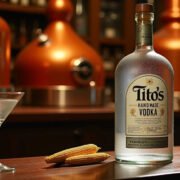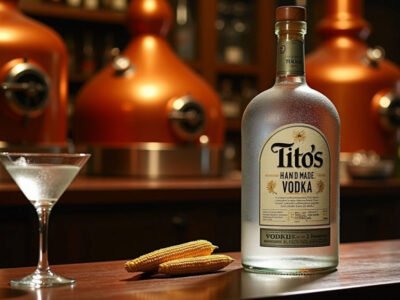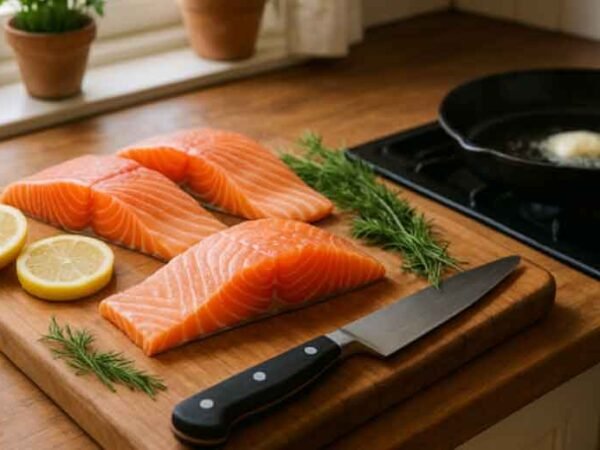Many people wrongly believe that Salvadoran meals revolve solely around pupusas. Pupusas stand as El Salvador’s national dish, and with good reason too. This tiny Central American country’s culinary scene packs more variety than most people imagine. The country’s beautiful culture and rich history shine through its food, yet its cuisine remains lesser known compared to its regional neighbors.
Salvadoran food stays true to its roots with indigenous ingredients like beans and corn. Young chefs from the post-war generation lead a culinary renaissance that changes the face of Salvadoran cuisine faster than ever. Their innovations prove you can find much more beyond the classic pupusa. El Salvador celebrates National Pupusa Day every second Sunday of November. This celebration acts as a gateway to the country’s vast food heritage rather than limiting it to a single dish. Salvadoran dishes create a unique culinary tradition that food lovers worldwide should experience. The cuisine blends tropical Pacific coastal influences with recipes dating back to pre-Columbian times.
Beyond Pupusas: The Real Variety of Salvadoran Cuisine
Salvadoran cuisine includes a mixture of flavors that goes way beyond the reach and influence of the beloved pupusa. This small Central American nation’s culinary world shows centuries of cultural blending, geographic diversity, and creative use of local ingredients.
Why pupusas are just the beginning
“El Salvador is more than pupusas, beaches, and bad things,” explains Chef Herrera, who challenges the idea that Salvadoran food is limited to its national dish. Pupusas serve as the ambassador of Salvadoran cuisine but tell just one part of a complex culinary story. The country’s food scene features a remarkable variety of dishes. People enjoy yuca frita (fried cassava with curtido), panes rellenos (stuffed bread sandwiches), and many meat preparations like carne guisada (saucy beef with potatoes). The country also takes pride in its rich tamale tradition, with unique varieties like tamales pisques (stuffed with black beans) and ticucos (“travelers’ tamales”).
The cultural roots of Salvadoran food
Indigenous traditions from the Lenca, Pipil, and various Maya peoples form the base of Salvadoran cuisine. Native influences explain why corn, beans, and chilies play such important roles in typical Salvadoran meals. Spanish colonization in the 16th century brought European ingredients like rice, wheat, and dairy products to the culinary mix. African influences added new flavors and techniques that created a unique fusion that still evolves today. This cultural blend explains why Salvadorans welcome dishes from indigenous-inspired pupusas to European-influenced pastries like semita de piña (pineapple pastry).
How geography shapes the cuisine
El Salvador’s size—similar to Massachusetts—hides remarkable geographic diversity that shapes regional cooking styles. Coastal regions shine with abundant seafood preparations, from ceviche to fried fish. The central highlands’ cooler climate helps grow potatoes, carrots, and cabbage that appear in traditional stews and soups. The eastern region loves its plantains, cassava, and coconut, showing clear Afro-Caribbean culinary influences. Specialty crops like loroco (an edible flower) and morro seeds (used in horchata) show how Salvadorans became skilled at using indigenous ingredients from their diverse landscape.
Street Foods That Locals Love
The streets of El Salvador tell a different story than its restaurants. Here’s where locals really enjoy their favorite foods through a vibrant street food scene that shows authentic Salvadoran meals.
Elote Loco: A flavor-packed corn snack
Elote Loco, which means “crazy corn,” turns simple corn into an amazing street treat. This eye-catching snack has boiled or grilled corn on the cob covered in mayonnaise and Salvadoran cheese. Vendors add colorful streaks of ketchup, mustard, and salsa negra (Worcestershire sauce). Unlike Mexico’s spicier version, Salvadorans love their elote loco with sweet, creamy, and tangy flavors at festivals and street markets.
Yuca con Chicharrón: A crunchy-smooth combo
This iconic street food combines boiled or fried yuca (cassava) with crispy chicharrón (fried pork). The yuca’s starchy, nutty taste works perfectly with the savory crunch of golden-fried pork belly or skin. The dish reaches new heights with curtido (pickled cabbage slaw) and chimol (fresh tomato salsa) that add brightness and balance. The town of Chalchuapa near Santa Ana serves some of the best yuca con chicharrón around.
Panes con Pollo: The ultimate chicken sandwich
Panes con pollo shows Salvadoran sandwich-making at its best. This filling sandwich uses shredded chicken marinated in a rich tomato sauce with garlic, onions, and traditional spices. The chicken sits on pan francés, a special Salvadoran bread with a hollow center that soaks up the sauce. Fresh lettuce, cucumber slices, tomatoes, radishes, and watercress complete the sandwich. A true panes con pollo should fall apart from its saucy goodness – that’s how you know it’s authentic.
Pastelitos de Carne: Bite-sized meat turnovers
Pastelitos are small, fried turnovers made from masa (corn flour) and shaped into half-moons. Each one contains seasoned ground beef, rice, and vegetables. Their crisp exterior pairs perfectly with the savory filling inside. Vendors serve these handheld treats with tomato sauce and fresh cabbage, showing Salvadorans’ talent for creating delicious portable snacks.
Hearty Soups and Stews You Shouldn’t Miss
Salvadoran home cooking’s life-blood comes from its soups and stews. These dishes give us a glimpse into family traditions that have passed down through generations. You’ll find these hearty, soul-warming dishes at weekend family gatherings and special occasions across El Salvador.
Sopa de Gallina India: Wild chicken soup
Sopa de Gallina India ranks among El Salvador’s most cherished meals. This rich soup uses free-range hen (not regular chicken) that simmers until tender and creates a deep, flavorful broth. The recipe has vegetables like chayote, carrots, potatoes, and corn on the cob. Salvadorans serve this dish in a unique way – the chicken comes separately with rice, while the vegetable-rich broth arrives in its own bowl. People call it their go-to comfort food, especially when they’re under the weather.
Sopa de Pata: A rich cow’s foot broth
Foreigners might hesitate at first, but Salvadorans love their Sopa de Pata. The recipe brings together cow’s feet, tripe, vegetables, and corn in a hearty, collagen-rich broth. Slow cooking pulls out all the flavor from the cow feet and creates a unique texture that’s both gelatinous and satisfying. Fresh cilantro, lime wedges, and chilies top this soup that shows off Salvadoran cuisine’s principle that everything gets used.
Sopa de Res: Beef and vegetable comfort
Sopa de Res serves as the everyday hero of Salvadoran soups. The recipe combines beef chunks with plenty of vegetables—cabbage, corn, yuca, plantains, and sometimes squash. Slow-simmered beef bones and local herbs give the broth its rich depth. Restaurants across El Salvador feature this as their weekend special, and it usually comes with fresh tortillas on the side.
Gallo en Chicha: A festive rooster stew
This celebration dish, Gallo en Chicha, features rooster that cooks slowly in fermented corn liquid (chicha). The meat needs plenty of time to become tender, which makes this ceremonial dish quite time-intensive. Sweet and savory flavors come together as the fermented chicha mixes with spices and sometimes dried fruits. You’ll find this complex dish mainly at big family gatherings and holidays.
Sweet Surprises and Traditional Desserts
A trip through Salvadoran cuisine must include the country’s amazing sweet treats. Local bakers and home cooks turn basic ingredients into unforgettable desserts that showcase El Salvador’s rich culinary heritage.
Quesadilla Salvadoreña: Sweet cheese bread
This isn’t your Mexican quesadilla. The Salvadoran version is a cheese pound cake that uses rice flour and sesame seeds as toppings. This gluten-free delight contains queso duro (hard cheese) that creates a unique sweet and slightly salty taste. Many families start their day with this treat and a cup of coffee or hot chocolate.
Torrejas: Salvadoran-style French toast
Salvadorans celebrate Easter with torrejas. They make this dessert by soaking thick slices of egg yolk bread in milk, eggs, and sugar. The bread turns golden when fried and gets a bath in sweet panela syrup with cinnamon. This comforting treat traces its roots back to centuries-old Spanish recipes.
Empanadas de Plátano: Plantain pastries
These empanadas break from tradition as sweet treats made from mashed plantain dough. A crispy outer shell wraps around milk custard or beans. The empanadas become a perfect mix of textures after frying, and some cooks dust them with sugar.
Arroz con Leche: Creamy rice pudding
Latin American cuisine loves this classic dessert. Salvadorans create their version by mixing rice, milk, sugar, and cinnamon. This simple yet satisfying treat tastes great whether served warm or cold.
Nuegados de Yuca: Cassava fritters in syrup
These traditional fritters show Salvadoran creativity at its best. Cooks grate cassava root to make chewy treats that turn golden when deep-fried. A drizzle of honey-like panela syrup makes them perfect with coffee or traditional drinks.
Conclusion
Pupusas have earned their fame, but Salvadoran cuisine offers much more. The country’s street foods, hearty soups, and sweet treats show the true depth of this underappreciated culinary tradition. Food enthusiasts who stick to pupusas miss out on a rich mixture of indigenous ingredients, Spanish influences, and regional adaptations.
These dishes tell powerful stories about El Salvador’s geography, cultural heritage, and family traditions. Street food creativity shines through elote loco and pastelitos. Soulful creations like Sopa de Gallina India and Gallo en Chicha bring families together during special occasions.
Salvadoran sweets deserve their own spotlight. Simple ingredients in Quesadilla Salvadoreña and torrejas create complex flavors that connect generations through time.
New food explorers should try each Salvadoran dish with an open mind. A world of flavors exists beyond the familiar pupusa. The authentic taste of El Salvador’s culinary soul comes alive through street vendor’s yuca con chicharrón or afternoon coffee with nuegados de yuca.
El Salvador’s food identity grows while staying true to its roots. Your next visit to a Salvadoran restaurant or food stand should go beyond pupusas. The true gems of any food culture live in the everyday dishes that locals love most.
FAQs
Q1. What are some must-try Salvadoran dishes beyond pupusas? While pupusas are famous, don’t miss out on other delicious options like yuca con chicharrón (fried cassava with pork), elote loco (corn on the cob with toppings), sopa de gallina india (wild chicken soup), and quesadilla salvadoreña (sweet cheese bread).
Q2. How does Salvadoran cuisine reflect the country’s cultural heritage? Salvadoran cuisine is a fusion of indigenous, Spanish, and African influences. It incorporates native ingredients like corn and beans, European introductions like rice and dairy, and unique cooking techniques that showcase the country’s diverse cultural roots.
Q3. What are some popular Salvadoran street foods? Popular Salvadoran street foods include elote loco (crazy corn), yuca con chicharrón (cassava with fried pork), panes con pollo (chicken sandwiches), and pastelitos de carne (meat turnovers). These dishes offer a taste of everyday Salvadoran flavors.
Q4. What types of soups and stews are common in Salvadoran cuisine? Salvadoran cuisine features hearty soups and stews like sopa de gallina india (wild chicken soup), sopa de pata (cow’s foot soup), sopa de res (beef and vegetable soup), and gallo en chicha (rooster stew in fermented corn liquid). These dishes are often enjoyed during family gatherings.
Q5. What are some traditional Salvadoran desserts? Traditional Salvadoran desserts include quesadilla salvadoreña (sweet cheese bread), torrejas (Salvadoran-style French toast), empanadas de plátano (plantain pastries), arroz con leche (rice pudding), and nuegados de yuca (cassava fritters in syrup). These sweets showcase the country’s skill in transforming simple ingredients into delightful treats.












